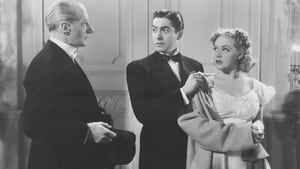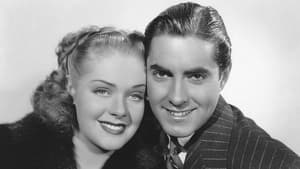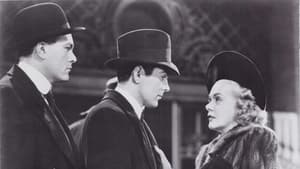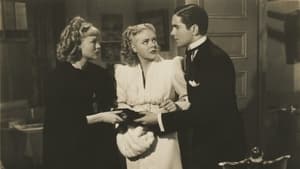Video Sources 0 Views
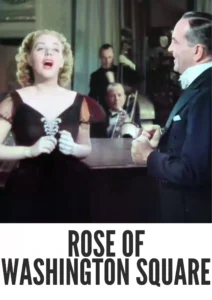
Synopsis
Vaudeville, Heartbreak, and Song: Rose of Washington Square (1939) in Vibrant Color

Step back into the dazzling world of 1930s vaudeville with Rose of Washington Square, a musical drama from 1939, now beautifully colorized for a viewing experience like never before. Starring Alice Faye and Tyrone Power, this film delivers a vibrant blend of romance, music, and heartbreak set against the backdrop of New York’s bustling entertainment scene. This HD download brings a classic piece of cinematic history to your screen, with songs that tug at your heartstrings and performances that captivate. Also known under the title The Life of Rose Hilron.
Rose of Washington Square Storyline: Love, Loss, and the Spotlight
Rose of Washington Square tells the story of Rose Sargent (Alice Faye), a rising star in the world of vaudeville, and her tumultuous relationship with Bart Clinton (Tyrone Power), a charming but irresponsible gambler. Set in the vibrant atmosphere of New York City, the film follows Rose’s journey as she navigates the challenges of love, fame, and heartbreak.Rose’s unwavering love for Bart leads her down a path of sacrifice and disappointment as she struggles to balance her career with his destructive habits. Despite his promises, Bart’s gambling addiction and involvement with shady characters threaten to tear them apart. Amidst the glitz and glamour of the stage, Rose must confront the harsh realities of her relationship and decide what truly matters most. The film features memorable musical numbers, showcasing Alice Faye’s vocal talent and adding emotional depth to the narrative. Ultimately, Rose of Washington Square is a poignant tale of love, loss, and resilience in the face of adversity.
Movie Cast
The film features a talented cast of actors who bring this emotional story to life:
- Alice Faye as Rose Sargent
- Tyrone Power as Bart Clinton
- Al Jolson as Harry Luscombe
- William Frawley as Harry Bolcer
- Joyce Compton as Peggy
Movie Genre
Rose of Washington Square falls into the genre of musical drama, with elements of romance and classic Hollywood glamour. Its combination of memorable musical numbers, emotional depth, and compelling performances makes it a standout film of the era.
Historical Context: The Golden Age of Hollywood Musicals
Released in 1939, Rose of Washington Square represents a highlight of the Golden Age of Hollywood musicals, showcasing the era’s lavish production values, star power, and sentimental storytelling. The film reflects the cultural trends of the time, with its themes of ambition, love, and the pursuit of the American dream. Rose of Washington Square is a product of its time, capturing the essence of 1930s entertainment and offering a glimpse into the lives and struggles of performers in the vaudeville era.
Colorization Details
This colorized version of Rose of Washington Square has been meticulously restored using modern digital techniques, enhancing the visual appeal while preserving the film’s original atmosphere of romance and drama. The colorization process involved carefully analyzing the grayscale tones of the original black and white footage and assigning appropriate colors to each scene. While the specific software used remains proprietary, the techniques employed included advanced algorithms for color palette selection and image enhancement. This painstaking process brings new life to the characters and settings, making the story even more engaging for modern audiences. While some may debate the merits of colorizing classic films, it introduces these films to a broader audience, ensuring their legacy for future generations.
Technical Details
- Director: Gregory Ratoff
- Screenplay: Nunnally Johnson
- Story: John Larkin, Jerry Horwin
- Cinematography: Karl Freund
- Edited by: Walter Thompson
- Production Company: Twentieth Century Fox
- Distributed by: 20th Century Fox
- Runtime: 86 minutes
Technical Specifications
- Download Format: MP4
- Resolution: HD (1080p)
- Compatibility: Compatible with most devices, including smartphones, tablets, computers, and smart TVs.
Reviews and Critical Reception
Rose of Washington Square (1939) is celebrated for its memorable musical numbers, strong performances, and emotional depth. Alice Faye’s portrayal of Rose is particularly praised, as is the chemistry between Faye and Tyrone Power. As a classic Hollywood musical, Rose of Washington Square continues to entertain audiences with its timeless themes and nostalgic charm.
FAQs
- Q: What is Rose of Washington Square about?
- A: Rose of Washington Square is a musical drama about a vaudeville star and her tumultuous relationship with a charming gambler.
- Q: Is Rose of Washington Square (1939) a well-known musical film?
- A: Rose of Washington Square is a beloved classic from the Golden Age of Hollywood musicals, known for its memorable songs and performances.
- Q: Is this version of Rose of Washington Square colorized?
- A: Yes, this version has been professionally colorized to enhance the viewing experience.
- Q: What makes Rose of Washington Square interesting for classic film fans?
- A: Rose of Washington Square offers a glimpse into the world of 1930s vaudeville and showcases the talent of classic Hollywood stars.
- Q: What is the download format?
- A: The download format is MP4, which is compatible with most devices.
- Q: What resolution is the download?
- A: The resolution is HD (1080p), providing a high-quality viewing experience.
Download Now in HD!
Watch Rose of Washington Square Today!
